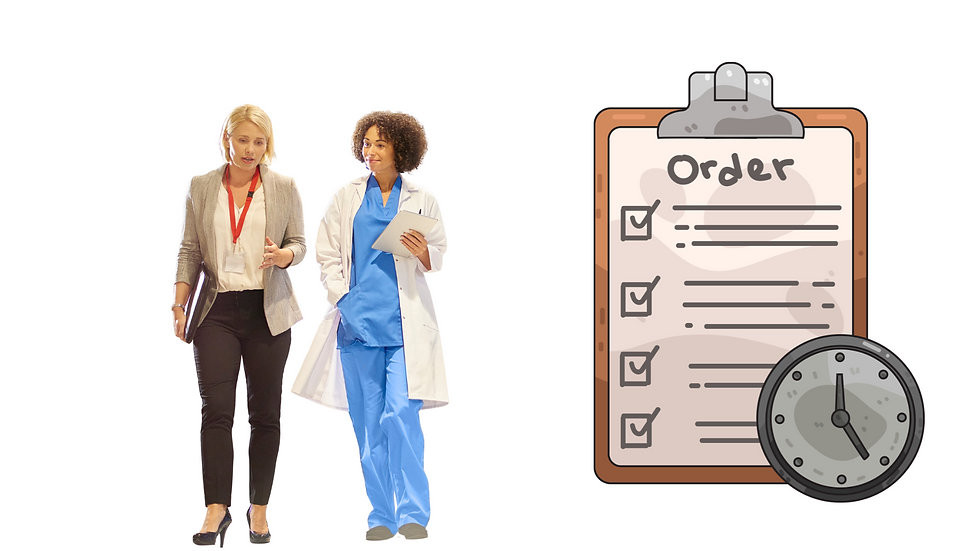Pharma Sales Routing Tip: How to Measure the Effectiveness of Your Route
- AtlasRoutes

- 6 days ago
- 3 min read

In pharma sales, most reps know how to plan a route — but far fewer know how to measure whether that route is actually effective.
You might be logging miles, tracking visits, and checking boxes in your CRM. But without analyzing how well your route supports coverage, efficiency, and results, you could be spending hours driving without real growth to show for it.
That’s why measuring your route effectiveness is a crucial part of a smart pharma sales routing strategy. It helps you understand whether your time in the field is generating the impact you want — and where small adjustments can lead to major gains.
Here’s how to measure, refine, and strengthen the effectiveness of your route.
🎯 Step 1: Define What “Effective” Means in Pharma Sales Routing
Before you can measure success, you need to define it.
Route effectiveness typically comes down to three pillars:
Coverage: Are you reaching all your key accounts consistently?
Efficiency: Are you spending more time with providers than behind the wheel?
Impact: Are your visits leading to meaningful interactions and business results?
If your route doesn’t support all three, it’s time to fine-tune your approach.
📅 Step 2: Review Coverage Consistency
Coverage is the foundation of effective routing. Even the best sales strategy can fail if your route leaves key accounts untouched.
Start by reviewing:
Which accounts you’ve visited most in the last 4–6 weeks.
Which Tier A accounts haven’t been seen recently.
Where your visits cluster geographically.
If your calls are concentrated in the same areas week after week, you may be over-servicing convenient accounts while missing higher-potential targets.
Pro Tip: Create a quick “coverage heatmap” in your CRM or routing tool to visualize your activity. This makes it easier to spot gaps in your territory and rebalance your schedule.
🚗 Step 3: Compare Drive Time vs. Call Time
One of the most telling indicators of route efficiency is your drive-to-call ratio — how much time you spend driving compared to how much time you spend selling.
If long drives are cutting into your provider face time, you’re losing opportunities.
How to fix it:
Cluster your stops by region or zip code.
Use a pharma sales routing tool like AtlasRx to automatically generate the most efficient path.
Focus on territory density — 4–5 high-quality visits in one area often outperform 8 scattered visits across town.
Reducing windshield time doesn’t just save hours — it gives you more energy for meaningful interactions.
💬 Step 4: Track Call Quality, Not Just Quantity
High call volume looks good in a report, but numbers alone don’t guarantee impact.
Ask yourself:
Are my conversations progressing or just checking a box?
Am I following up where it matters most?
Are my high-priority accounts getting the right frequency and focus?
Your route should reflect your territory strategy — not just what’s easiest to schedule.
Pharma sales routing is about prioritization: spending time where it has the greatest business and relationship return.
📈 Step 5: Compare Output vs. Effort
Every effective routing plan should produce measurable outcomes. Review your results monthly or quarterly to evaluate your return on effort:
Territory growth: Are scripts or engagement increasing?
Efficiency: Are you making more calls with fewer miles?
Relationship strength: Are more providers proactively scheduling time with you?
These indicators help you pinpoint what’s working — and where you need to adjust.
🔄 Step 6: Refine Regularly
The best pharma sales routing plans aren’t static — they evolve with your territory.
Set aside 15 minutes each month to:
Review your route data.
Identify gaps or inefficiencies.
Make one or two focused adjustments.
Even small refinements — like adjusting call frequency or clustering visits more tightly — can dramatically improve your performance over time.
💡 Example: Turning Measurement into Momentum
One rep reviewed their past six weeks and discovered that 70% of their calls came from the same five offices. These offices were friendly — but low-growth.
By measuring effectiveness, they rebalanced their route to include new targets and adjusted travel zones. Within one quarter, call diversity improved by 40%, and engagement from high-value targets doubled.
That’s what happens when you move from activity to strategy.
🧭 Final Thought
In pharma sales, efficiency without impact is just motion.
By regularly measuring your route, you can uncover where time is wasted, where opportunities are missed, and where your best efforts truly pay off.
Because the most successful reps don’t just plan their routes — they optimize and measure them.
It’s not about how many miles you drive — it’s about what those miles produce.
Measure and Optimize with AtlasRx
If you want to go beyond manual tracking and spreadsheets, AtlasRx makes route measurement simple.
Our platform helps pharma reps:
Analyze visit frequency and coverage automatically.
Track drive time vs. call time for efficiency.
Optimize routes for better results — every week.



Comments